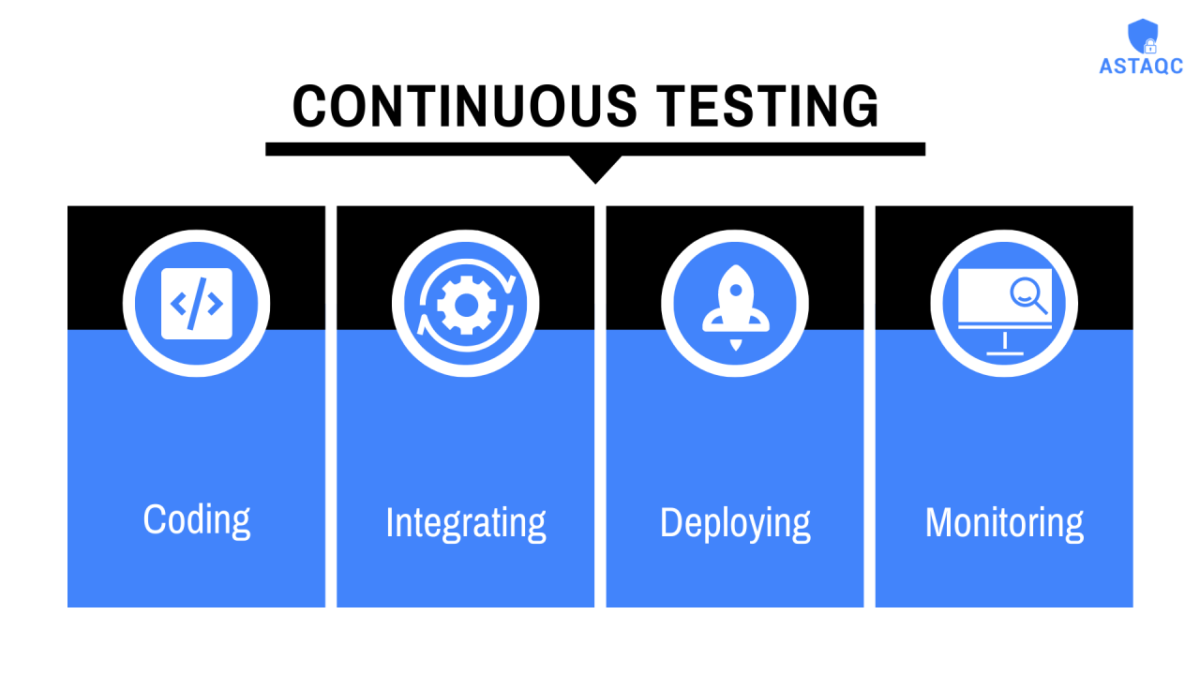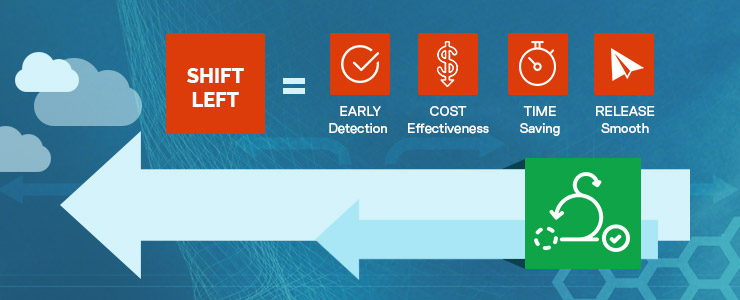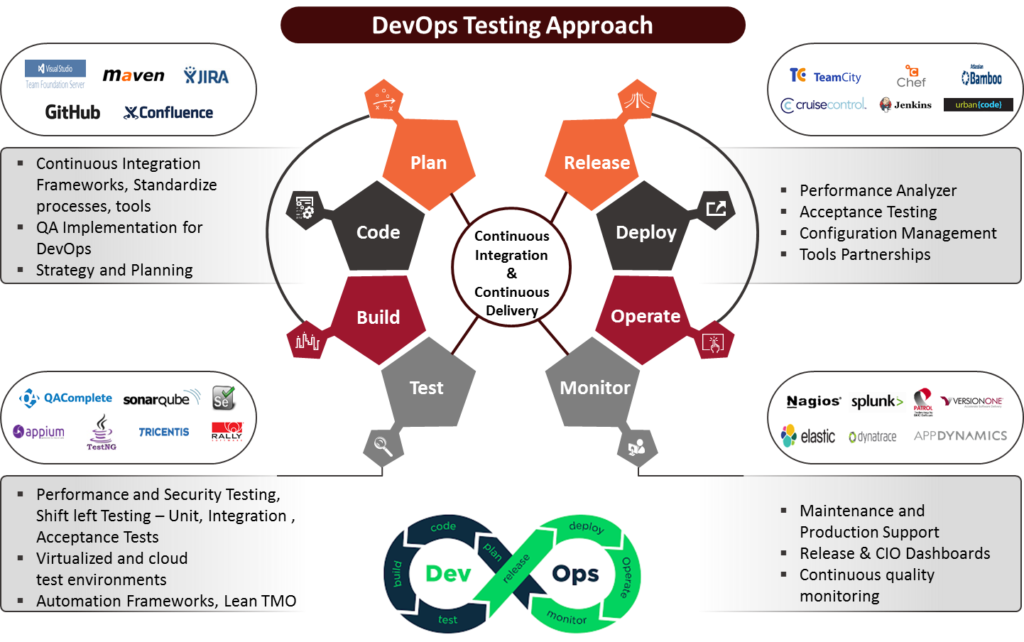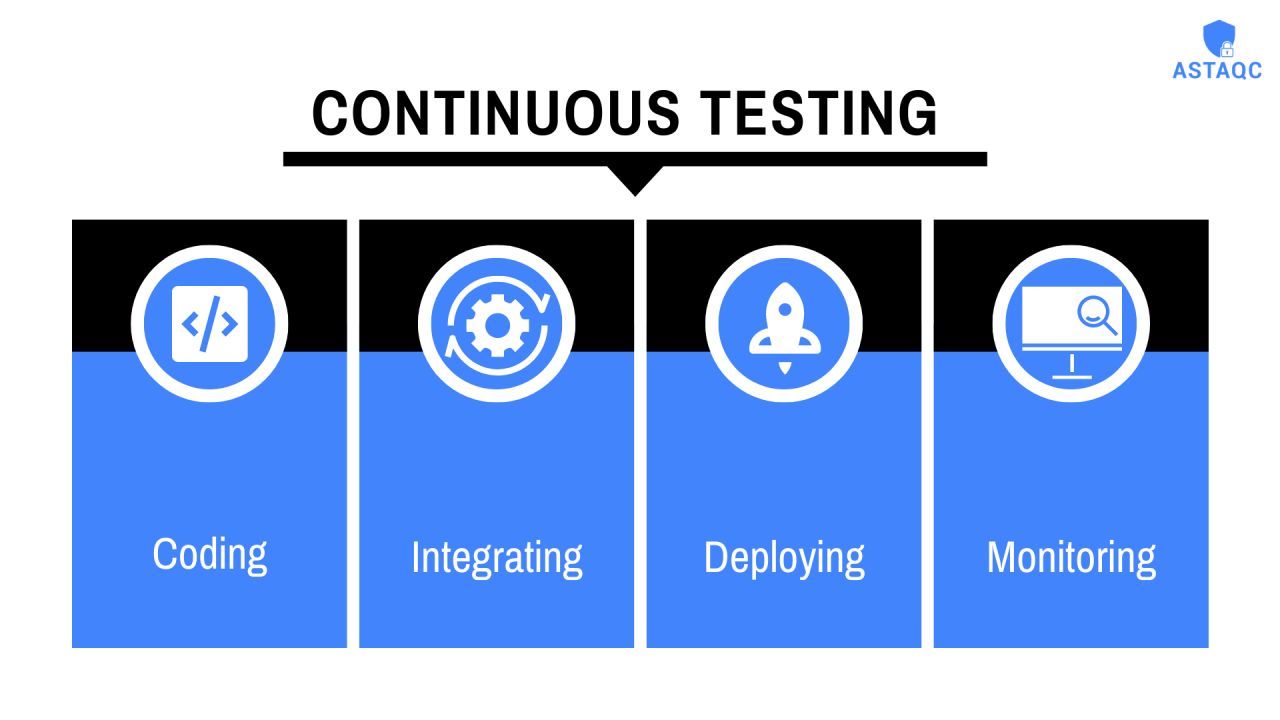
Continuous testing and quality monitoring together with continuous test development based on TDD, BDD and shift-less as well as shift-right testing are all crucial for DevOps quality. At the same time, performing quality checks at different points in the DevOps cycle is also the responsibility of everyone involved. For example, the emphasis at continuous build is to find if the build has the potential of interfering with operation, while validating usability and functionality is focused upon at continuous development. The focal point of continuous integration is to validate security, performance and usability. To ensure quality in DevOps, clear understanding of potential risks and priorities with respect to business performance and customer value is also crucial. Let’s take a closer look at some key aspects that drive an integrated DevOps quality approach.
Download Free Whitepaper: The Role of Testing in DevOps and Agile
An automated testing process and continuous quality monitoring:
These are related to the continuous build, development and deployment process. With a completely automated process of testing, every aspect (from test planning, test strategy, test environment set up to test data provision and test execution including functional and non-functional testing) is covered. Validation checks are performed with quality analysis tools while newly created/defined validation checks are automatically included in the complete set of existing quality checks. Based on instant user reports and production incidents, quality level of applications is monitored closely and continuously by setting up a quality automation framework.
Continuous testing:
This implies continuous quality since every step of the SDLC process is under consistent quality check to ensure flawless delivery and faster time to market. Continuous testing is performed by adopting the following approaches:
- Shift-left and shift-right: Shift-left is an integral part of continuous integration, while shift-right is used when the domain of testing is extended after receiving end-users’ feedback.
- TDD and BDD: With these methods, everyone involved (from developers and operations to users and testers) get a quick idea of the expected functionality and operations of the application. When coupled with priorities and possible risk factors, such knowledge can act as inputs to generate test cases automatically.
- Continuous Integration with Test Automation: With this, you can reduce the manual effort, thus helping testing and development teams to detect and fix issues faster throughout the SDLC process.
Integrating Non-functional Testing with Continuous Testing:
Usually, non-functional tests are not frequently run in normal continuous-integration-system cycles since they may take a lot of time to be executed. For example, it may two weeks to run a stability test. But to achieve quality in DevOps, it’s important to integrate non-functional tests for performance, usability and security etc with continuous testing. Increasing the number of test beds that allow multiple, overlapping tests or configuring the CI systems to selectively run longer tasks based on their capacity are some ways of doing it.
Other key points to consider:
For DevOps quality, the following too should be given due importance:
- Tracking frequency of new code deployment: It will let team members of any project track the regularity of deployment.
- Tracking lead time and change in projects: While the former will help to track successful deployment and find areas of improvement, the latter will help set parameters to track project changes.
- Tracking percentage of failed deployments: This will help to know the deployments that led to users’ negative feedback and outages, both of which will help to ensure quality right from the beginning till the end of the process.
- Assessing MTTR (mean time to recovery): This helps to check how market-ready the product is by tracking failures and complex issues, together with evaluating how efficiently teams can handle such difficult situations and bounce back on track.
- Checking stability of performance metrics: Irrespective of changes in deployment indicators or user feedback, performance metrics should stay stable as they indicate the preparedness of the application/software within the defined limits.
Final Words
To improve the value your business delivers, you need to choose a testing partner that knows and implements steps to achieve excellence in DevOps quality. TechArcis can play this role well by bringing its experienced test team to help you achieve DevOps with quality. Contact us today to get started.
Download Free E-Book: Role of Testing in Digital Transformation
More Related Blog

Continuous Testing and Its Role in the Software Development Cycle
Change is the only constant –this is an often repeated adage. It is equally applicable to the software development cycle. In today’s competitive market where everyone is short on time. Clients and customers are impatient to get results. Business houses … Continue reading "Multiple testing strategies to achieve quality in DevOps"...
Read More
What is “Shift Left”? 2024 Shift Left Testing Explained
Shift left testing is the practice where testing is introduced at the inception stage of software development. Here, the teams emphasize on prevention rather than detection and aim to enhance the overall quality of the software....
Read More
Agile and DevOps development Model is an Incremental Process (Updated JAN 2024)
Agile methodology is widely adopted in almost all the enterprises, its advantages and the agility it brings to software and product development process is widely recognized. Organizations are now on the path to adopt DevOps, which is a step in … Continue reading "Multiple testing strategies to achieve quality in DevOps"...
Read More
